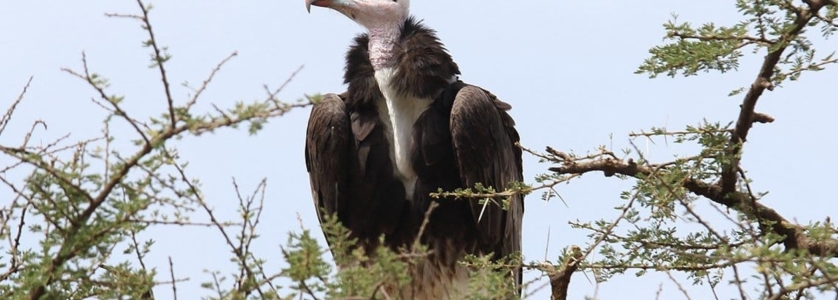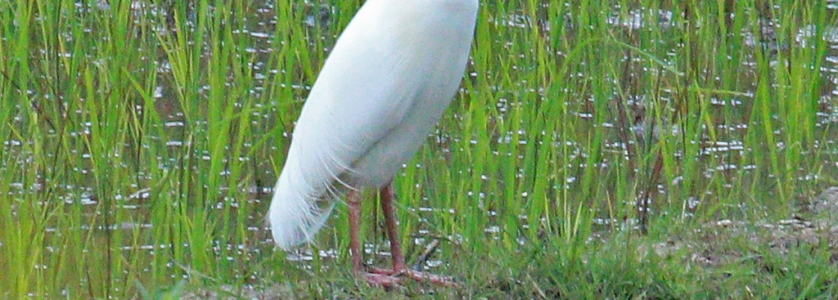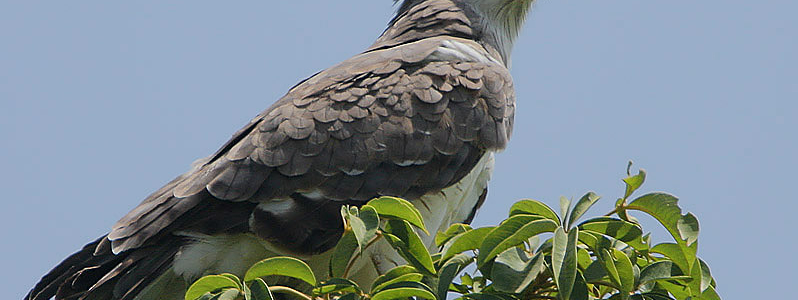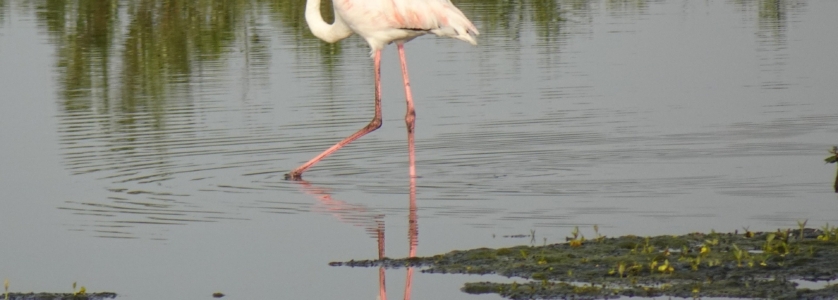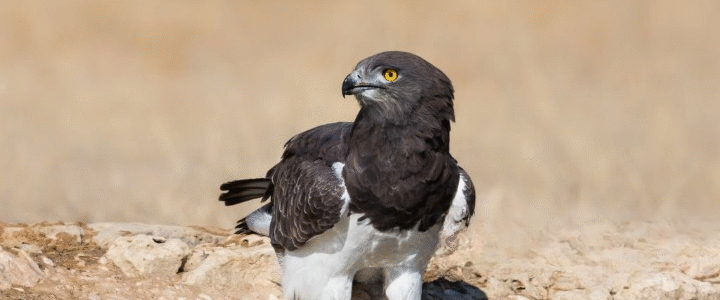
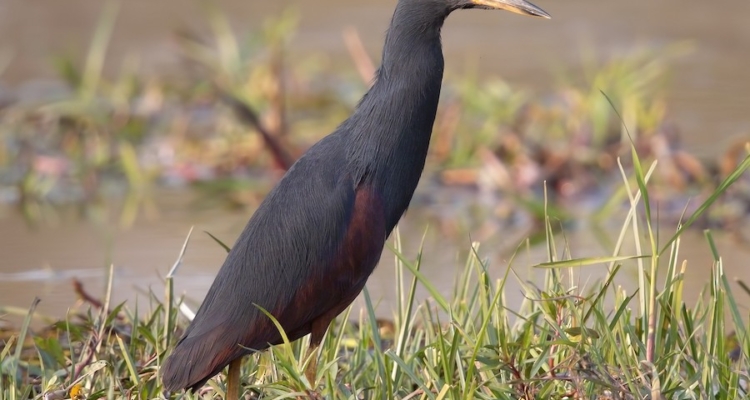
Binomially, Rufous Bellied Heron is referred to as Ardeola rufiventris which lies in the Pelecaniformes that is an order of the large and medium-sized water birds that are widely spread.
It is one of the Uganda bird species seen during birdwatching in Uganda and belongs to the Ardeidae or heron family that falls in Ardeola genus that typically measures about 40 to 50 centimeters in length with a broad and large wing span that measuring between 80 to 100 centimeters wide.
Don’t miss spotting this bird species on your Africa birding tours.
The physical identification and Behaviour of the Rufous Bellied Heron
The Rufous Bellied heron is a small dark heron species which is characterised with a head that is dark greyish in colour along with the back and contrasting breast with a rufous belly, tail and wings.
This bird species seen on Uganda birding safaris is comprised of the bright yellow feet and legs with the underside body reflecting the dark feathers while in flight.
Juvenile Rufous Bellied heron do feather a paler and browner body which keep on darkening as the bird species matures.
The bird species assumes to be like a bittern in posture although it hides with its bill in a horizontal position rather than vertically hence a skulking species while hiding.
During feeding period, the bird hunts for food within the shallow water and in the well vegetated wetlands of the landward side. While feeding, the Rufous Bellied heron feeds mainly on small fish like the tilapias, amphibians, crustaceans, barbus and different aquatic insects.
When fishing, the bird species stands still in a motionless state awaiting to ambush its prey.
Being a large and sedentary bird species, Rufous Bellied Heron usually makes migratory movements partially during the rainy seasons inundations of flood plains. Nesting is done colonially in mixed flocks of different small groups that ranges from about 6 to 30 pairs.
Distribution and breeding process of the Rufous Bellied Heron
Rufous Bellied heron seasonally inhabits marshes, flooded grasslands, inland deltas, shallow water along river banks, flood plains, reedbeds, stands of papyrus, paddies and lake shores.
The bird species is widely spread within the southern, Eastern and central Sub-Saharan Africa.
It also occurs from the Southern Democratic Republic of Congo and through Tanzania, Uganda, Kenya, Burundi, Rwanda, Zambia, Zimbabwe, Mali, Lesotho, Angola, Malawi and Zambia to South Africa.
During the breeding period that occurs when flooding or in the rainy season, both the adult male and female do participate in the construction of the nest.
The male bird species do gather the nesting materials and it is built and positioned high in the tree, low reeds along with shrubs.
This nest is normally a small platform of vegetation placed over or at the water edges. Rufous Bellied Heron is mainly a monogamous breeder sometimes breeding in flocks of about 2 to 4 pairs.
The adult breeding female lays a maximum of about 1 to 4 eggs nearly year round and both partners do play a role within the incubation process that takes a period of about 21 days after the eggs have been laid.
After hatching the chicks are fed by both parents and will leave the nest at about 24 days of age and fly within the range that is monitored by the parents.
The young ones fully develop wing feathers that are broad and strong enough to cause flight at a period of one month after hatching has happened.
Witness this bird species in its natural habitat on birding trips in Africa.
More posts for you

Over 50 excellent reviews on Safaribookings.
 >
> 